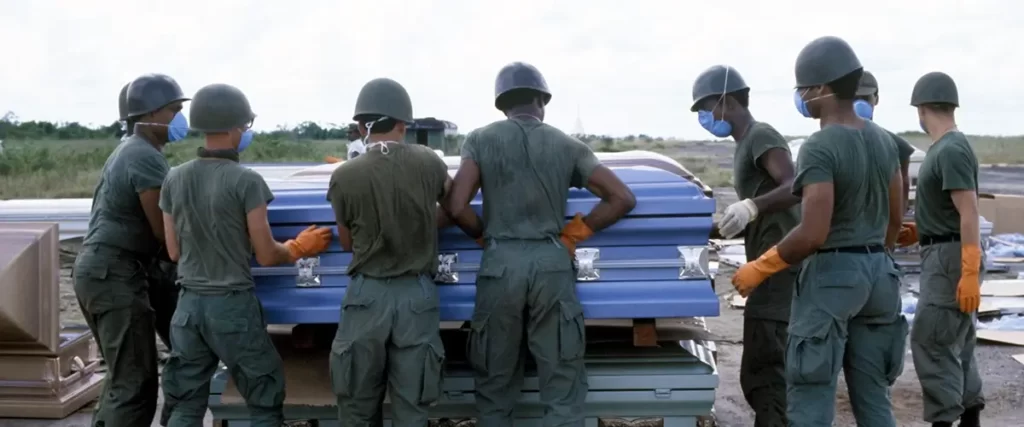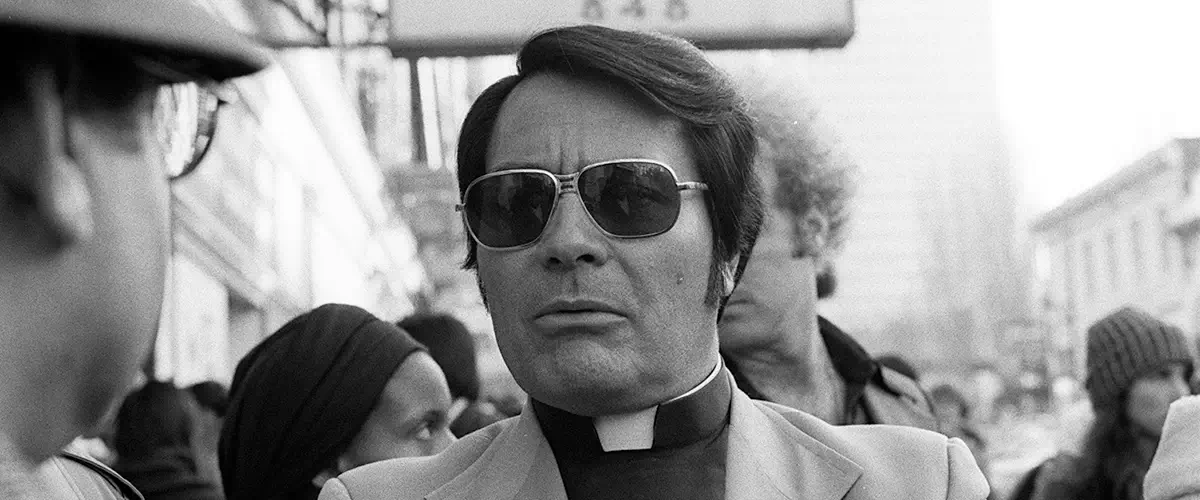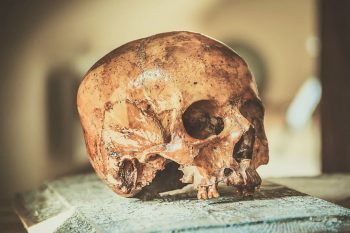(Article photo above: Jim Jones, the leader of the notorious Jonestown cult where over 900 people died in mass suicide.)
What's the definition of a cult?
The term “cult” typically refers to a group that exhibits the following characteristics:
Devotion to a charismatic leader: Cults are typically led by a single, charismatic individual who is believed to have special knowledge or spiritual insights.
Exclusive membership: Cults often demand absolute loyalty and devotion from their members, who are encouraged to cut off ties with family and friends outside the group.
Thought control: Cults often use psychological techniques, such as mind control, to maintain control over their members’ thoughts, beliefs, and behaviours.
Unorthodox beliefs and practices: Cults may espouse beliefs and practices that are outside the mainstream of traditional religions, such as belief in extraterrestrial beings or apocalyptic prophecies.
The history of cults is long and complex, with many different groups and movements arising at different times and in different parts of the world. Some scholars trace the history of cults back to ancient times, with examples such as the mystery religions of the Greco-Roman world or the various religious movements that emerged in ancient India and China.
In modern times, there have been many high-profile examples of cults, including the People’s Temple led by Jim Jones, the Branch Davidians led by David Koresh, and the Heaven’s Gate group led by Marshall Applewhite. These groups have often been associated with extreme beliefs and practices, and have sometimes engaged in violent or self-destructive behaviour.
The phenomenon of mass suicides in cults
The phenomenon of mass suicide in cults is a complex issue that involves a combination of psychological, social, and cultural factors. Listed below are some possible factors that can contribute to the occurrence of mass suicides in cults.
Belief in an apocalyptic or transformative event
Many cults espouse the belief that the world is about to end, or that a transformative event is about to occur that will usher in a new era of spiritual enlightenment. This belief can create a sense of urgency and a willingness to take extreme measures, such as suicide, to be a part of this momentous event.
Groupthink and conformity
Cults often exert strong pressure on their members to conform to the beliefs and practices of the group. This can lead to a phenomenon known as “groupthink,” in which individuals suppress their own doubts and concerns in order to maintain group cohesion. This can make it difficult for individuals to resist the pressure to commit suicide when it is presented as a group decision.
Coercion and control
Cult leaders may use a variety of techniques, including mind control and psychological manipulation, to exert control over their followers. This can create a situation in which individuals feel that they have no choice but to obey the leader’s commands, even if they involve acts of self-harm or suicide.
Disenfranchisement and disempowerment
Cults often attract individuals who are searching for meaning, purpose, and a sense of belonging. However, once they join the cult, they may find themselves in a situation where they are isolated from the outside world and cut off from their social support networks. This can create a sense of disenfranchisement and disempowerment that can make it difficult for individuals to resist the pressure to commit suicide.
Psychological distress and mental illness
Some individuals who join cults may be struggling with underlying psychological issues or mental illness, such as depression, anxiety, or trauma. These individuals may be particularly vulnerable to the influence of cult leaders, and may be more likely to engage in self-harm or suicide.
Historical examples of cult mass suicides
There are a few historical examples of cult mass suicides, including the Jonestown massacre in 1978 and the Order of the Solar Temple in the 1990s. These incidents demonstrate the dangers of cults and their potential for violence, and have had a lasting impact on public awareness of the risks associated with these groups.
Listed below are a few examples from history in more detail.
Jonestown (1978)
Jonestown was a settlement in Guyana that was established by the Peoples Temple, a religious group led by Jim Jones. The Peoples Temple was founded in Indiana in the 1950s and moved to California in the 1960s, where it gained a following for its progressive message of racial equality, social justice, and community activism. However, by the late 1970s, the group had become increasingly isolated and paranoid, with Jones exercising total control over the lives of his followers.
In 1977, Jones established the settlement of Jonestown in Guyana, which he described as a “socialist paradise” where his followers could live in peace and harmony. However, Jonestown quickly became a site of abuse and exploitation, with Jones exerting complete control over every aspect of his followers’ lives, including their beliefs, behavior, and relationships. He also subjected them to physical and emotional abuse, including beatings, isolation, and forced medication.
In November 1978, a delegation from the United States visited Jonestown to investigate allegations of human rights abuses. Jones, fearing that his group was on the verge of being exposed, ordered his followers to commit a mass suicide by drinking poisoned punch. Over 900 people, including over 200 children, died in the massacre.

Heaven's Gate (1997)
Heaven’s Gate was a cult group founded in the 1970s by Marshall Applewhite and Bonnie Nettles. The group believed that they were extraterrestrial beings who had been sent to Earth to help guide humanity through a transition to a higher level of existence. They preached a message of spiritual evolution, claiming that their teachings would help followers transcend the limitations of their physical bodies and enter a new realm of existence.
The group became notorious in 1997, when 39 members of the group committed mass suicide in order to reach what they believed was an alien spacecraft that was following the Hale-Bopp comet. The members of the group believed that their physical bodies were merely containers for their souls, and that by shedding these bodies, they would be able to join the aliens on the spacecraft and ascend to a higher plane of existence.
The mass suicide was carefully planned and executed by the group’s leaders, with members ingesting a lethal mixture of phenobarbital and applesauce, and then covering themselves with purple shrouds. The bodies of the dead were discovered by police in the group’s compound in Rancho Santa Fe, California, and the incident received widespread media coverage.
The Order of the Solar Temple (1994-1995)
The Order of the Solar Temple was a secretive and controversial religious group that gained notoriety in the 1990s for a series of coordinated suicides and murders in Switzerland and Canada. The group was founded in Switzerland in the 1980s by Joseph Di Mambro and Luc Jouret, and espoused a mix of esoteric beliefs drawn from various spiritual traditions.
In 1994, the group carried out a mass suicide and murder in Switzerland, in which 23 members were killed. The following year, the group carried out a similar attack in Canada, in which 51 members died. The incidents involved both voluntary suicides and forced killings of members who were seen as a threat to the group’s survival.
The Order of the Solar Temple was known for its secrecy and for the extreme loyalty of its members to the group’s leaders. The group’s apocalyptic beliefs and predictions about the end of the world, combined with its emphasis on secrecy and obedience, created a situation in which members were willing to take extreme actions to protect the group and its leadership.
Solar Temple in France (1995)
The Solar Temple mass suicide in France in 1995 was one of several incidents carried out by the Order of the Solar Temple mentioned above.
On October 4, 1995, a fire broke out in a farmhouse in the French village of Cheiry, where several members of the Solar Temple had gathered. In the aftermath of the fire, 16 members of the group were found dead, either from gunshot wounds or from being suffocated by plastic bags placed over their heads.
The incident was investigated as a mass suicide, with the group’s leaders believed to have orchestrated the event in order to protect the group from perceived threats and to fulfill their apocalyptic beliefs. The group believed that the end of the world was imminent, and that by killing themselves, they would be able to travel to a new, higher realm of existence
Movement for the Restoration of the Ten Commandments of God (2000)
The Movement for the Restoration of the Ten Commandments of God was a Christian sect that was active in Uganda in the late 1990s and early 2000s. The group was founded in the early 1990s by Credonia Mwerinde and Joseph Kibweteere, and preached a message of apocalypticism and salvation through strict adherence to the Ten Commandments.
In 2000, the group’s leaders predicted that the end of the world was imminent, and that they and their followers would be saved by God if they committed suicide. On March 17, 2000, over 500 members of the group, including women and children, gathered in a church in Kanungu and were burned to death in what was one of the deadliest incidents of mass suicide in modern history.
The exact circumstances of the Kanungu massacre remain unclear, but it is believed that the group’s leaders were motivated by a desire for power and control, as well as financial gain. Many of the victims had given up their possessions and money to the group in the belief that they would be saved.
Aum Shinrikyo (1995)
Aum Shinrikyo was a Japanese doomsday cult that gained notoriety in the 1990s for its deadly attacks in Tokyo and other parts of Japan. The group, which was founded by Shoko Asahara in 1984, blended elements of Buddhism, Hinduism, and Christianity with apocalyptic beliefs about the end of the world.
While Aum Shinrikyo did not engage in a mass suicide like some other infamous cults, the group did carry out a number of deadly attacks that resulted in the deaths of many of its members as well as innocent civilians.
In 1995, Aum Shinrikyo carried out a sarin gas attack on the Tokyo subway system, which killed 13 people and injured thousands of others. The group also carried out a number of other attacks, including the release of sarin gas in the city of Matsumoto in 1994, and an attempt to release botulinum toxin in Tokyo in 1995.
Following the attacks, Japanese authorities launched a massive crackdown on Aum Shinrikyo, which led to the arrest and conviction of many of its leaders and members. Asahara himself was executed in 2018 for his role in the attacks.
After the group’s leaders were arrested and many of its members were convicted for their involvement in the attacks, some members did reportedly commit suicide. However, these were individual cases rather than a mass suicide event orchestrated by the group’s leadership.

